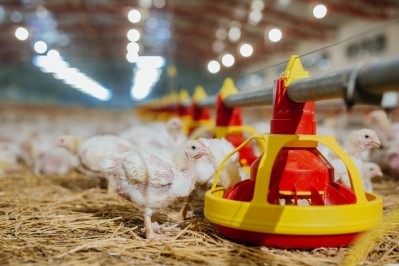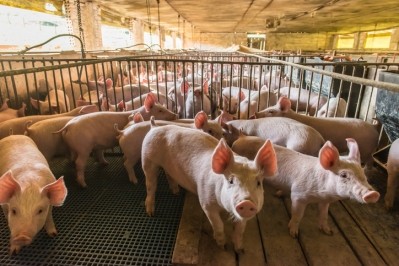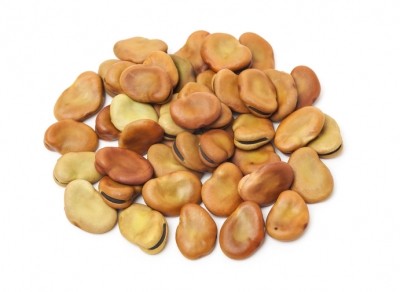Reports from VICTAM 2019, in Cologne
Interest increasing in enzymatic and microbial fermentation
He was speaking at the first International Feed Technology Congress (IFTC) at VICTAM in Cologne last week.
Enzymatic and microbial fermentation are gaining more attention in animal nutrition, allowing the use of alternatives to imported soybean meal (SBM), such as legumes including peas, in poultry diets, he said.
Due to the short retention time of digesta in the poultry gut, the outcome of in-feed enzyme application can be very inconsistent, he told FeedNavigator.
In a paper, published in 2018, which evaluated the consequences of inclusion of different pea products in turkey diets, Zentek et al, noted the retention time of feed in the gastrointestinal tract (GIT) of poultry is very short and, that since the optimum pH of most of exogenous enzymes is between 4 and 6, the degradation activity of them is mainly limited to the proximal part - crop, proventriculus and gizzard - of the GIT.
On the other hand, pre-treatment of peas for use in poultry diets with enzymes like beta-glucanase, alpha galatosidase, phytase, etc. can inactivate anti-nutritional factors (ANFs) in feed and improve the digestion process through higher nutrient availability, he said.
Zentek said previous research he and his colleagues carried out in this vein, was very promising. Their studies showed enzymatic pre-treatment could improve the nutritional quality of pea through considerable reduction in alpha-galactosides, trypsin inhibitor activity, phytic acid and resistant starch as well as significant improvement of the starch digestibility and energetic value in broiler and turkey diets.
Turkey study
In turkey production focused research, published in Animal Feed Science and Technology, Zentek et al conducted an investigation in how fermentation (FE) and enzymatic treatment (ET) of pea affect standardized ileal digestibility (SID) of nutrients in diets with peas as the only protein source.
They evaluated the consequences of inclusion of different pea products in turkey diets (100 g/kg) on growth performance and bird health.
The production procedures of processed pea products were according to the methods used by Goodarzi Boroojeni et al. (2017). A commercial batch of Madonna pea (Pisum sativum L.) was hammer milled (2 mm screen size) as full seeds (including hulls) to be used for the continuous production of pea dough (500 g/kg DM) during ET and FE, added the team.
Solid state fermentation
For the solid state fermentation (SSF) process, BIOPLUS 2B (EU authorized probiotic to be used in turkey feed) consisting of Bacillus licheniformis and Bacillus subtilis in a 1:1 ratio (Chr. Hansen, Denmark) was used, said the researchers.
The water of dough production was inoculated with the probiotic spores beforehand, resulting in final concentration of approximately 4.9 × 108 Bacillus subtilis and licheniformis spores/kg pea.
The homogeneously mixed dough (500 g/kg DM), was pumped in internal cathodic protected (ICP) tanks and incubated in temperature (30°C) controlled containers for 48 hours.
Enzymatic treatment (pre-digestion)
For ET, they said that three different commercial exogenous enzymes plus a mixture of organic acids (10 ml/kg pea dough; 8 ml lactic and 2 ml acetic acid) were added to the water of dough production beforehand. Added organic acids mixture resulted in a final pH of 4.5 in the dough (500 g/kg DM), inhibiting uncontrolled FE of pea by its associated microorganisms (spoilage) during 24 hours incubation time at 30°C, they said.
The applied commercial enzymes were 0.2 g/kg pea RONOZYME ProAct (DSM, Switzerland), 0.2 g/kg pea RONOZYME VP (DSM, Switzerland), and 0.1 g/kg pea AlphaGal (Kerry EMEA, USA).
Drying and milling of processed pea
Right after the incubation time, the researchers said the wet processed materials were simultaneously dried and ground by an Ultra-Rotor dryer mill. In total, seven samples from dried products were analyzed concerning their particle size via laser particle size analyzer. The mean particle size of the final products was approximately 55 ± 5.2 μm, they reported.
Both processes reduced α-galactosides, phytate, trypsin inhibitor activity and resistant starch in peas, said the team.
Findings
For the standardized ileal digestibility (SID) assay, they said 288 turkeys were assigned to 24 pens and received four experimental diets including native (NP), fermented (FEP) and enzymatically treated peas (ETP) as well as an N-free diet (all supplemented with vitamins and minerals).
The ETP had better SID of protein, Glu, Phe and Val compared with FEP and NP. Enzymatic treatment of pea also improved standardized ileal digestibility of Ala, Gly, His, Ilu, Leu and Lys, but digestibility of these nutrients in fermented pea were similar to the other two types of pea. Both processes drastically improved ileal digestibility of starch, found the authors.
For the performance trial, they outlined how 960 turkeys were allocated into 60 pens and received four different diets consisting of a basal mash wheat-SBM diet (CON) and experimental diets, which were prepared by inclusion of each pea products NP (NPD), FEP (FEPD) and ETP (ETPD) in the basal diet at the rate of 100 g/kg. The experiment lasted 105 days.
In general, birds that received ETPD or FEPD diets showed better growth performance than those fed NPD diet, while birds in ETPD group displayed similar performance to those fed CON diet, they said. At the end of the trial, birds fed CON and ETPD diets had the best FCR and birds that received NPD diet had the worst one, observed the researchers.
Birds in ETPD group showed the best footpad dermatitis score and turkeys in the NPD group had the worst score, they said. The footpad dermatitis scores for turkeys in CON and FEPD groups were identical and considerably different from those in ETPD and NPD groups.
In conclusion, they said both processes could improve the nutritional quality of pea by reduction in ANF and increasing ileal starch digestibility. Furthermore, ET process considerably improved SID of protein and AAs in pea. Inclusion of ETP in turkey diets (100 g/kg) demonstrated neither positive nor negative impact on growth performance, while it remarkably improved footpad dermatitis score, said the team.
The data showed the feasibility of these processes, particularly ET, for improving the nutritional quality of pea as a protein source for turkey diets, they said.
Source: Animal Feed Science and Technology
DOI: https://doi.org/10.1016/j.anifeedsci.2018.01.008
Title: Fermentation and enzymatic treatment of pea for turkey nutrition













